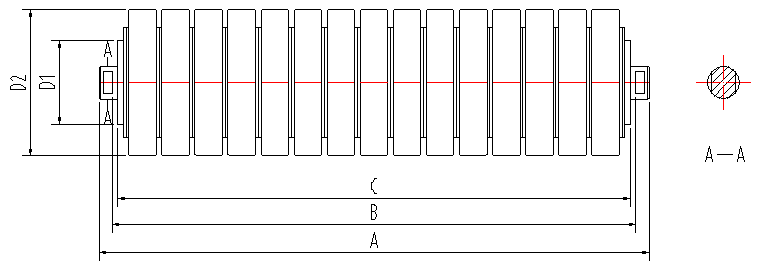 Afrikaans
Afrikaans  Albanian
Albanian  Amharic
Amharic  Arabic
Arabic  Armenian
Armenian  Azerbaijani
Azerbaijani  Basque
Basque  Belarusian
Belarusian  Bengali
Bengali  Bosnian
Bosnian  Bulgarian
Bulgarian  Catalan
Catalan  Cebuano
Cebuano  Corsican
Corsican  Croatian
Croatian  Czech
Czech  Danish
Danish  Dutch
Dutch  English
English  Esperanto
Esperanto  Estonian
Estonian  Finnish
Finnish  French
French  Frisian
Frisian  Galician
Galician  Georgian
Georgian  German
German  Greek
Greek  Gujarati
Gujarati  Haitian Creole
Haitian Creole  hausa
hausa  hawaiian
hawaiian  Hebrew
Hebrew  Hindi
Hindi  Miao
Miao  Hungarian
Hungarian  Icelandic
Icelandic  igbo
igbo  Indonesian
Indonesian  irish
irish  Italian
Italian  Japanese
Japanese  Javanese
Javanese  Kannada
Kannada  kazakh
kazakh  Khmer
Khmer  Rwandese
Rwandese  Korean
Korean  Kurdish
Kurdish  Kyrgyz
Kyrgyz  Lao
Lao  Latin
Latin  Latvian
Latvian  Lithuanian
Lithuanian  Luxembourgish
Luxembourgish  Macedonian
Macedonian  Malgashi
Malgashi  Malay
Malay  Malayalam
Malayalam  Maltese
Maltese  Maori
Maori  Marathi
Marathi  Mongolian
Mongolian  Myanmar
Myanmar  Nepali
Nepali  Norwegian
Norwegian  Norwegian
Norwegian  Occitan
Occitan  Pashto
Pashto  Persian
Persian  Polish
Polish  Portuguese
Portuguese  Punjabi
Punjabi  Romanian
Romanian  Russian
Russian  Samoan
Samoan  Scottish Gaelic
Scottish Gaelic  Serbian
Serbian  Sesotho
Sesotho  Shona
Shona  Sindhi
Sindhi  Sinhala
Sinhala  Slovak
Slovak  Slovenian
Slovenian  Somali
Somali  Spanish
Spanish  Sundanese
Sundanese  Swahili
Swahili  Swedish
Swedish  Tagalog
Tagalog  Tajik
Tajik  Tamil
Tamil  Tatar
Tatar  Telugu
Telugu  Thai
Thai  Turkish
Turkish  Turkmen
Turkmen  Ukrainian
Ukrainian  Urdu
Urdu  Uighur
Uighur  Uzbek
Uzbek  Vietnamese
Vietnamese  Welsh
Welsh  Bantu
Bantu  Yiddish
Yiddish  Yoruba
Yoruba  Zulu
Zulu Assembly and Installation Guidelines for Conveyor Roller Systems in Material Handling Applications
Understanding Conveyor Roller Assembly An Essential Component in Material Handling
In the world of material handling systems, conveyor roller assemblies play a pivotal role in the efficient movement of goods across various industries. These assemblies facilitate streamlined operations in manufacturing, warehousing, and distribution, making them indispensable for any organization that relies on bulk material transportation. Understanding the anatomy, functionality, and benefits of conveyor roller assemblies can significantly enhance operational efficiency and productivity.
Anatomy of Conveyor Roller Assembly
A conveyor roller assembly is composed of several key components that work in harmony to facilitate the smooth transportation of materials. The primary parts include the roller, frame, bearings, and drive mechanism.
1. Rollers The rollers are cylindrical components that directly support the materials being transported. They can be made from various materials, including steel, plastic, or rubber, depending on the application's specific requirements. The roller's diameter and width can also vary to accommodate different types of materials and loads.
2. Frame The frame serves as the backbone of the conveyor system. It provides structural integrity, supporting the rollers and the load being carried. Frames can be constructed from steel or aluminum and are designed for durability and resistance to wear and tear.
3. Bearings Bearings minimize friction between the rollers and frame, allowing for smooth rotation of the rollers. Proper bearing selection is critical, as it affects the efficiency and lifespan of the conveyor system.
4. Drive Mechanism The drive mechanism is responsible for powering the conveyor belt or roller system. It can include electric motors, gear systems, or other automated systems that provide the necessary torque to move materials effectively.
Functionality of Conveyor Roller Assembly
conveyor roller assembly

The primary function of the conveyor roller assembly is to facilitate the horizontal movement of materials from one point to another. The roller assembly acts as a support and drive system that allows payloads to glide smoothly without excessive manual handling. This automated process drastically reduces the potential for employee injury and minimizes the time spent on moving items.
Conveyor roller assemblies can be found in various configurations, including belt conveyors, gravity conveyors, and powered roller conveyors. Each system has its unique advantages depending on the application. For example, gravity conveyors employ rollers that rely on gravity for movement, making them an economically favorable choice for gentle material handling.
Benefits of Conveyor Roller Assembly
1. Increased Efficiency Conveyor systems equipped with roller assemblies are designed for optimal flow, which significantly increases the speed, efficiency, and dependability of material handling. This efficiency translates to faster production times and improved operational throughput.
2. Safety Manual handling poses risks for workers; conveyor roller assemblies reduce the need for heavy lifting, thereby minimizing the likelihood of workplace injuries. Furthermore, these systems can be equipped with safety features such as emergency stops and guards.
3. Versatility Conveyor roller assemblies can be customized to suit an array of applications across different industries, including logistics, mining, agriculture, and manufacturing. This versatility makes them an essential component of any material handling system.
4. Cost Savings While the initial investment in a conveyor roller assembly may seem substantial, the long-term benefits in labor savings, increased speed, and reduced handling costs often yield significant returns on investment.
Conclusion
In summary, conveyor roller assemblies are a vital component in the landscape of material handling systems. With their combination of efficiency, safety, versatility, and potential for cost savings, they are integral to modern industrial operations. As industries continue to evolve and adopt new technologies, the importance of optimizing and maintaining conveyor roller assemblies will only grow, reinforcing their role as a cornerstone of efficient material movement.
-
Wing Pulley Conveyor for Conveyor Belt MaintenanceNewsJun.16,2025
-
Self Cleaning Spiral Idler for Conveyor DesignNewsJun.16,2025
-
Pulley Lagging for Conveyor Belt AlignmentNewsJun.16,2025
-
Impact Idlers Used in Belt Conveyor for PerformanceNewsJun.16,2025
-
Ceramic Lagging Conveyor Pulley for Conveyor Belt SystemsNewsJun.16,2025
-
Belt Conveyor Idler for Heavy-Duty ApplicationsNewsJun.16,2025





























